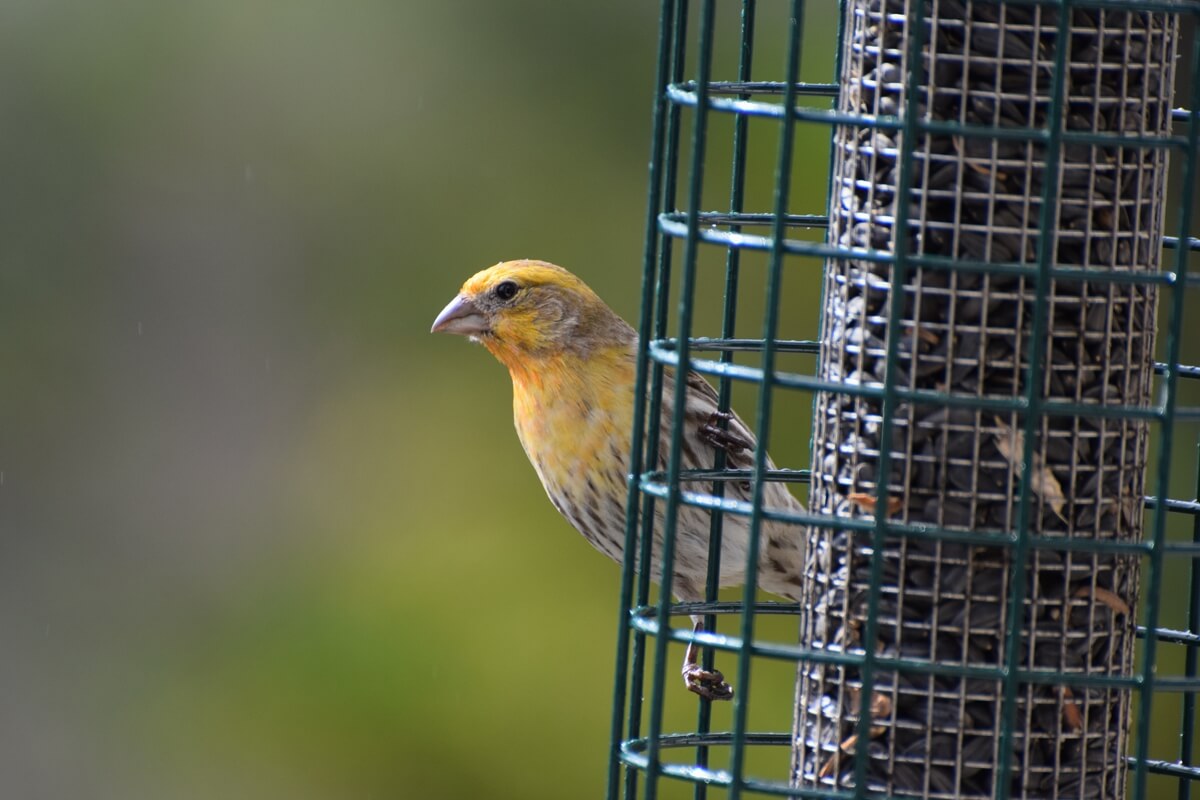I love watching the birds at my feeders, which are strategically placed away from potential danger and in such a way that I get a great view from my favorite place to sit and read. I’ll notice all the activity in a peripheral sort of way, but when something unusual happens, or a bird appears that’s out of the ordinary, my attention is immediately focused. I get so much pleasure from watching these beautiful creatures un-noticed, but still close up.
In years past I’ve participated in Cornell University’s “Feeder Watcher Program”, which engages citizen scientists all across America to help compile statistics on songbirds. One year, the observations of individual watchers was used to help monitor and track the spread of an eye infection amongst house finches.
I put out two feeders, each containing just one type of seed: niger thistle and black oil sunflower. Most commercial seed mixes are a waste of money, since much of the seed contained is not of interest to the wild birds. It is interesting to notice how the different birds handle the seeds they take from the feeders. House finches eat the sunflower seeds right at the feeder; they have a special groove in their bill that allows them to crack and remove the shell without dropping the seed meat. Titmice and chickadees will take a seed and then fly off with it to a level branch where they can grip the seed with their toes and crack it open to get at the seed meat. Scrub jays will weigh several seeds before they take the heaviest one; some are eaten, but many are “planted” – stashed away for future consumption. Lots of seeds get dug into the soil in the fall, and dug out again in the spring. And the jays aren’t the only creatures doing this; the gray squirrels are also stashing seeds and acorns.
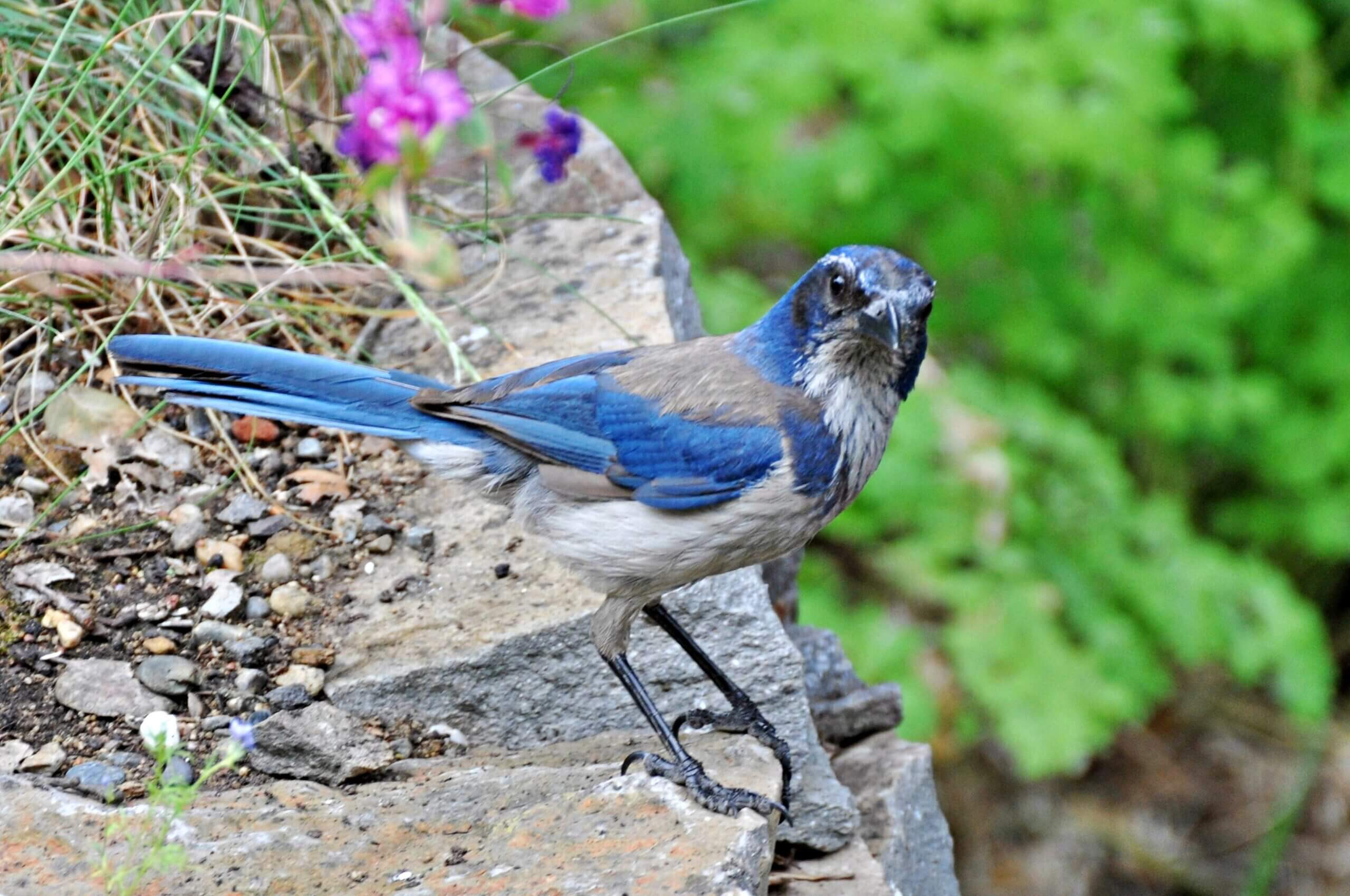
Western Scrub Jay
BUT, here’s a major problem: Keep in mind that the birdseed we buy is a product of agribusiness, and these days it’s a huge market now worth millions of dollars each year. These are crops that are grown in the typical way of modern, large scale farming – in huge monoculture fields using all sorts of chemical inputs, slowly destroying topsoil and adding more and more pollutants to already stressed natural environments.
AND, it’s important – and ironic – to realize that most likely, natural habitat for birds and a host of other creatures was destroyed or severely compromised in order to grow birdseed for additional food, yes. But really, mainly for the somewhat selfish pleasure of “bird lovers”.

Bewick’s Wren with a spider
It’s Really all about Habitat!
The best way to provide abundant resources for the birds is to preserve or create and maintain habitat in the wild and in our own gardens. When creating habitat, the single most important resource that a habitat gardener can provide for the birds is thriving and diverse populations of insects. Insects are the foundation of all other life; almost all the songbirds rely on insects to raise their young, and many other birds are insectivorous for at least a portion of the year.
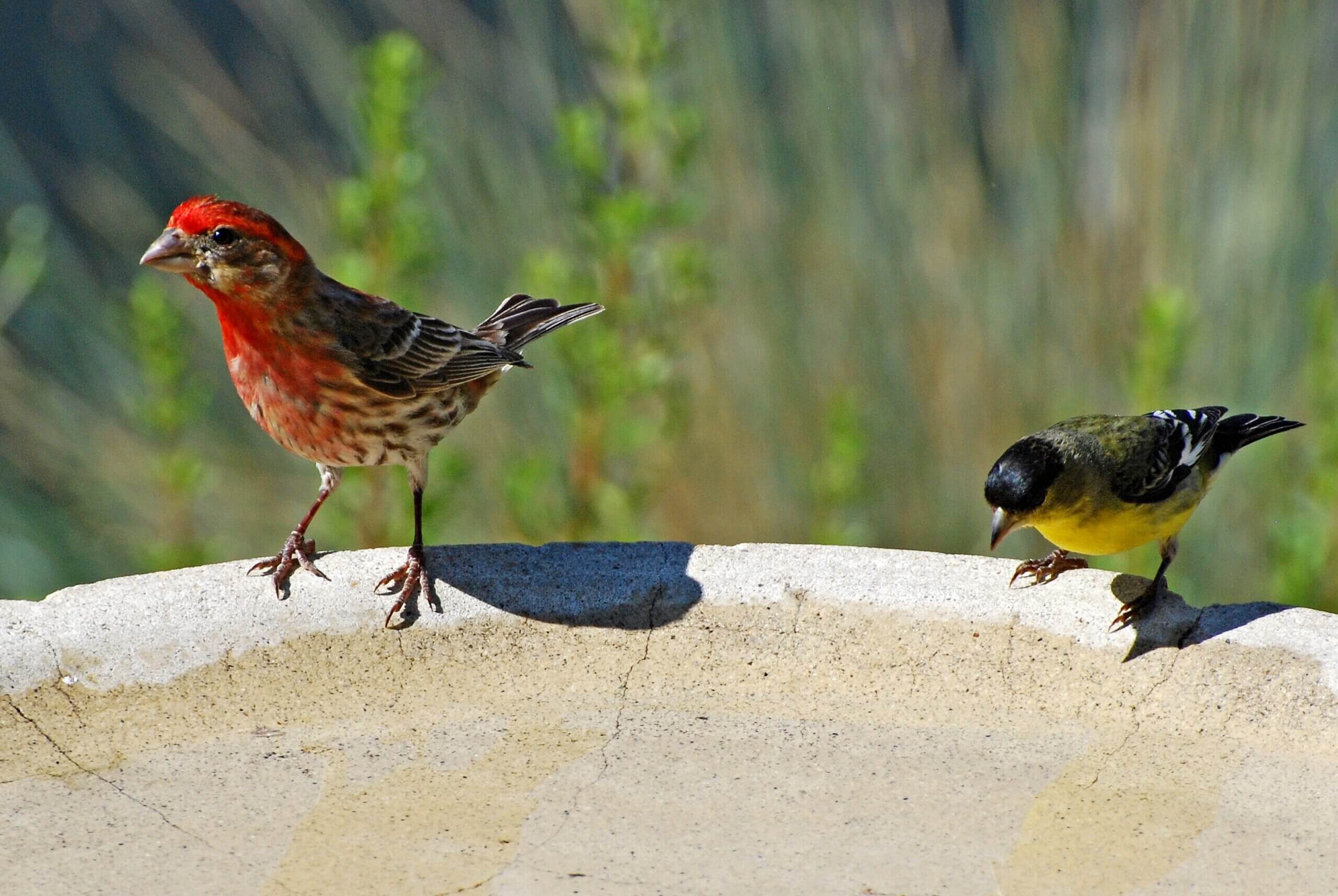
birds bathing
So it goes without saying that every serious habitat gardener creates a Pesticide-Free-Zone. Other than that it’s important to provide a source of clean water, safe cover, nesting materials and safe nesting sites. The best way to do so is by increasing plant diversity, both in species and in forms; trees, shrubs, perennials, vines, and grasses. California native plants are the best providers for native creatures, but carefully selected non-natives can also provide resources. The best habitat plants provide multiple resources.
I don’t put out a hummingbird feeder; instead I have at least one species of salvia in full bloom every month of the year. All the native salvias grow in my garden, and bloom in succession from January through June, but it’s a variety of non-native salvias that bloom throughout the summer months and right through the rainy season.
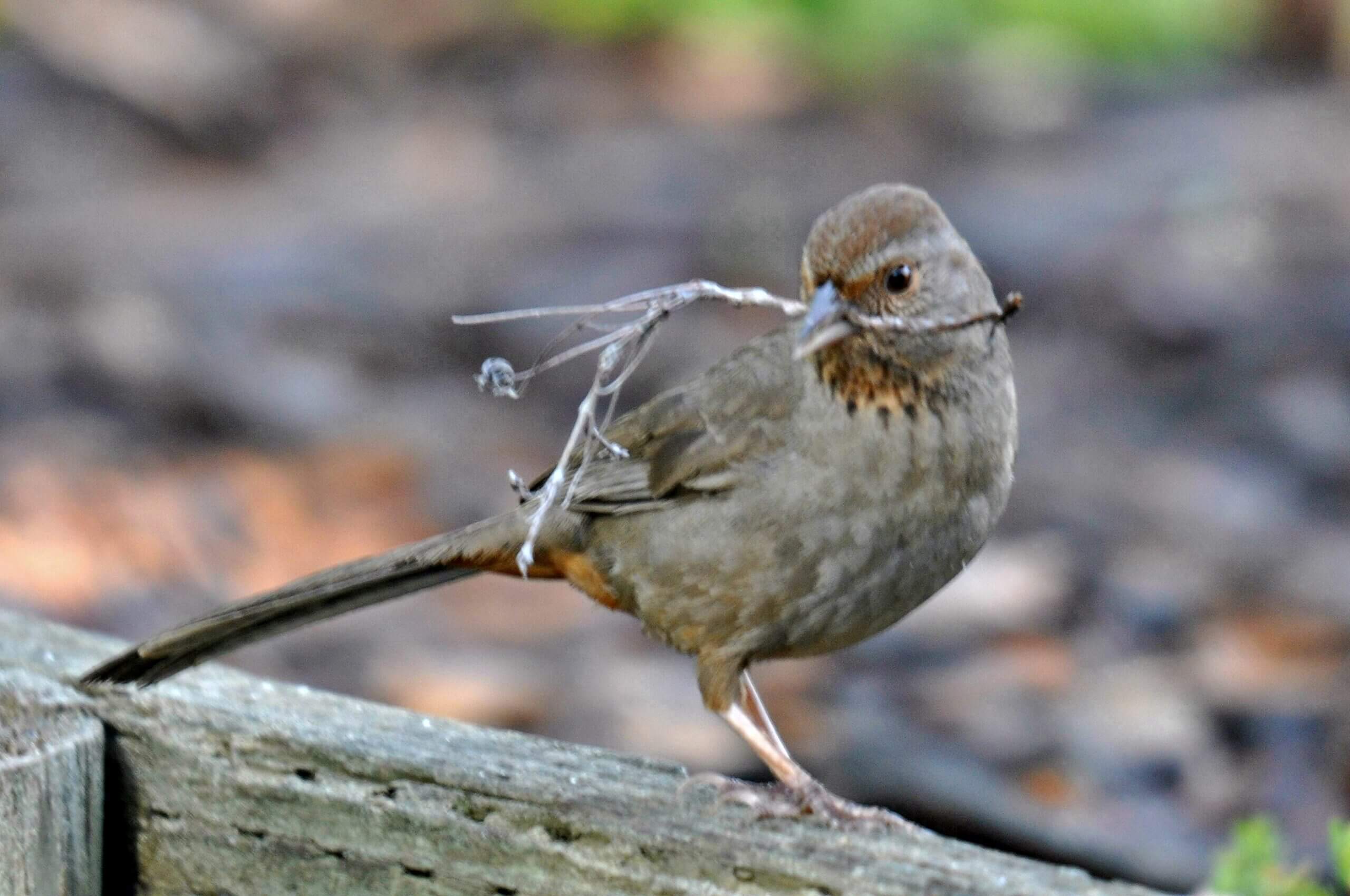
California Towhee with nesting material
Don’t forget about all the insects and other arthropods that live in the soil. A mulch layer protects the life in the soil, which helps provide for the ground feeding birds. Fruits and seeds are important too; a conscientious habitat gardener will let at least some plants go to seed and will leave a portion fruits and berries for the birds. Birds also eat green leaves and flower petals. It took me a while to figure out that it was goldfinches skeletonizing the leaves of the sunflower plants!

Tree Swallow pair at a nesting box
It’s all about the Natives!
First of all a habitat gardener must recognize the plant community (or remnants thereof) within which they live and garden. The existing large trees or large established shrubs usually define the community, and other plant species are often common associates within that community. There will be the resident birds, which a gardener will want to provide resources for, and also migrants that come and go seasonally.

Turkeys
In my Oak Woodland, acorn woodpeckers are a ‘keystone’ resident species; scrub jays, titmice, chickadees, nuthatches, goldfinches, house finches, towhees, juncos, turkeys, bushtits, Bewick’s wren, mourning doves and Anna’s hummingbirds are also residents. In summer months flycatchers live and breed here, and in winter months, robins and other thrushes, ruby-crowned kinglets, flickers, cedar waxwings and the golden and white-crowned sparrows spend time foraging in the garden and woodlands.
Oak trees support an amazing array of life; some studies show up to 5,000 species of insects may be associated with California oaks. Acorns are ripening up and starting to drop as I’m writing this article in mid-September; they will be sustenance for many creatures for months to come.
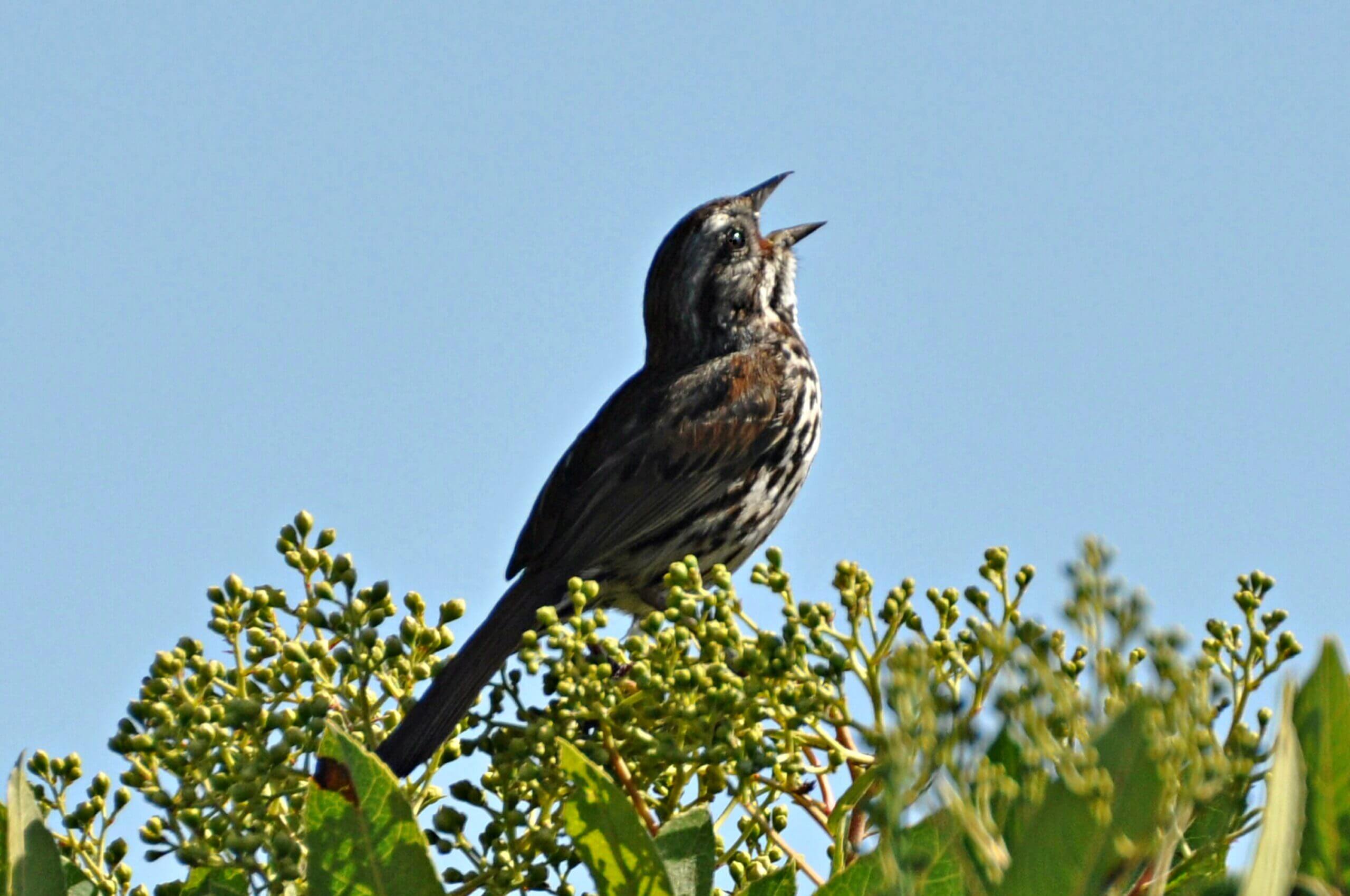
Song Sparrow on Toyon
There’s also a plentiful variety of native food plants in my garden to sustain life. Elderberries are abundant, and there are still some barberries and currants left on the shrubs. There’s also seed still available at the native Salvias, while goldenrods, asters and gumplants, and the summer blooming tarweeds are all setting seed. Catalina cherry has wonderfully sweet cherries which the birds, deer and rodents all appreciate. California fuchsias are in full bloom, and the hummers are trap-lining every drift. Soon the Toyon berries will ripen up, and the bright red color will act as a magnet for flocks of migrating birds.
Coyote brush is another native magnet for insects; about 400 species are found associated with these native shrubs. The blooms come at a time when little else is available, and seed set is prolific, providing still more sustenance during the fall months.
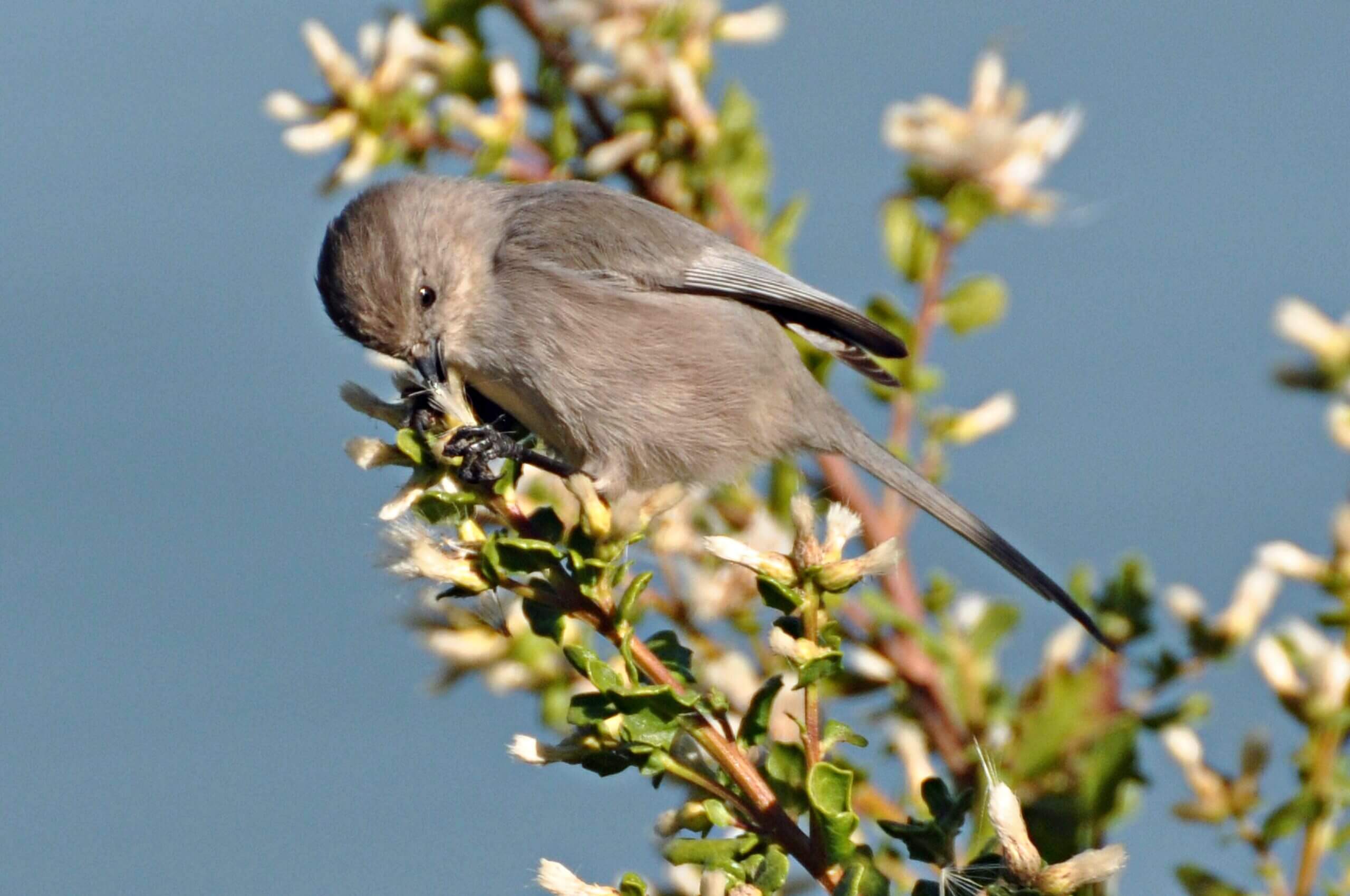
Bushtit on Coyote Brush
Learn more in this related blog: California’s Native Cornucopia – Plentiful Food for the Birds

